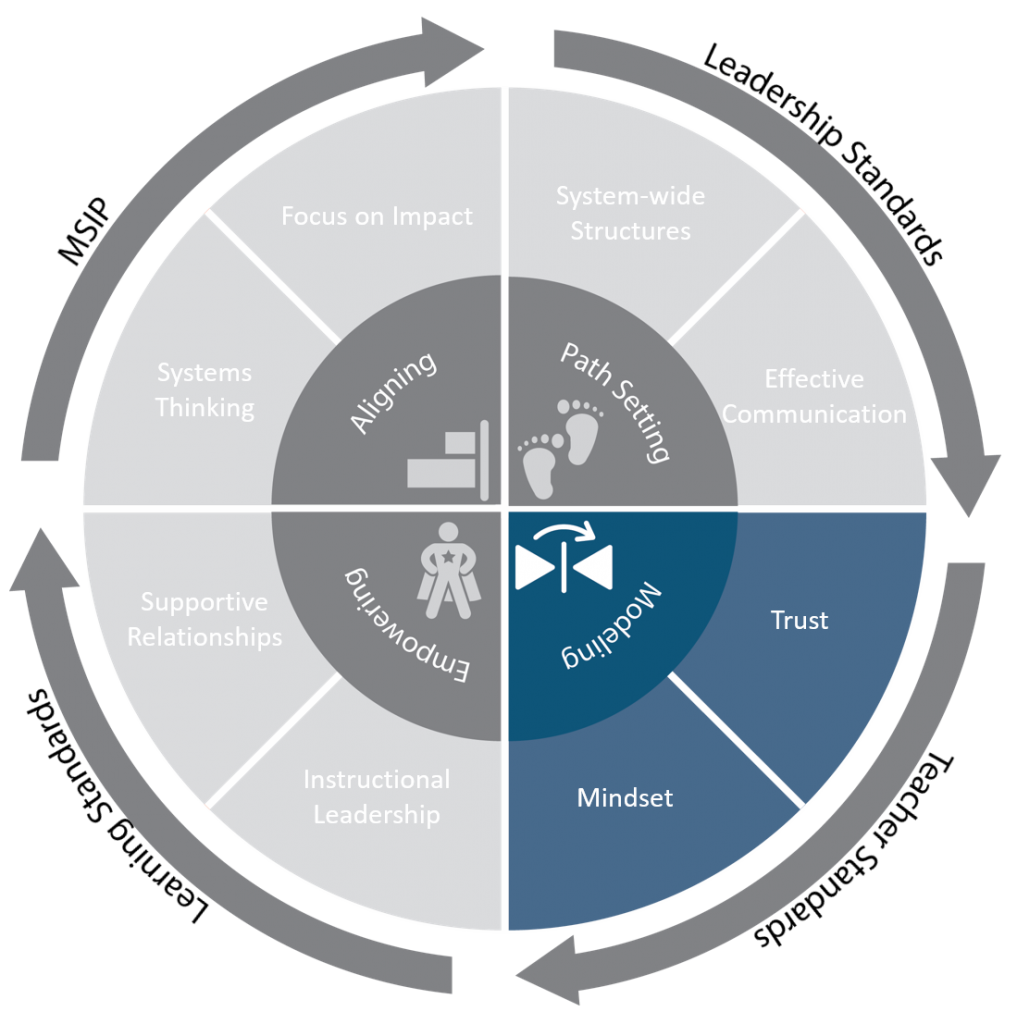“…a school’s culture is not static. It is a continual process in which attitudes, values, and skills continually reinforce each other.”
Senge, Hamilton & Kania, 2015
OVERVIEW OF ESSENTIAL FUNCTION 3: MODELING
Essential Function 3 focuses on the involvement of educational leaders in the change process. Through their actions and decisions, educational leaders communicate the importance of an initiative and their belief in the plan. For large-scale, sustainable changes, educators have to believe that their actions are important to the plan and that they have the ability to impact student outcomes. Building trust and helping to foster a growth mindset are two key strategies leaders can use to foster Collective Teacher Efficacy. For more information on Collective Teacher Efficacy and its importance see the Learning Module Collective Teacher Efficacy.
Essential Function 3: Leadership models and facilitates qualities of trust and growth mindset as key to a culture of continuous improvement.
- Leadership builds an organizational culture of trust that leads to all of the criteria below.
- Belief by teachers that the leadership’s actions are consistent with shared values
- Belief by teachers that the leadership follows through on commitments
- Belief by teachers that the leadership values all staff.
- Belief by teachers that they have the ability to positively affect student learning
- Leadership promotes and models a growth mindset by meeting all of the criteria below.
- Setting both long- and short-term organizational goals
- Seeking teacher feedback and input regularly
- Providing teachers with constructive, detailed feedback
- Creating opportunities for teachers to observe each other’s classes to learn from one another
- Discussing both successes and failures with teachers as opportunities for learning
- Valuing effort as the path to mastery
Download the Practice Profile for Leadership for Effective Implementation of District-Wide Evidence-Based Practices
In the following video, Peter Senge explains how a leader’s actions shape the perceptions of others. As you watch this video, consider how Senge’s remarks relate to Essential Function 3: Leadership models an organizational culture of continuous improvement.
Actions Create Reality (Sarder, 2015). (3:32 min)
Reflective Questions
Can you think of examples in which leaders’ actions failed to consider the whole system? What were the consequences?
What strategies have you used to build and promote a culture of trust?
How would you define the term growth mindset?



